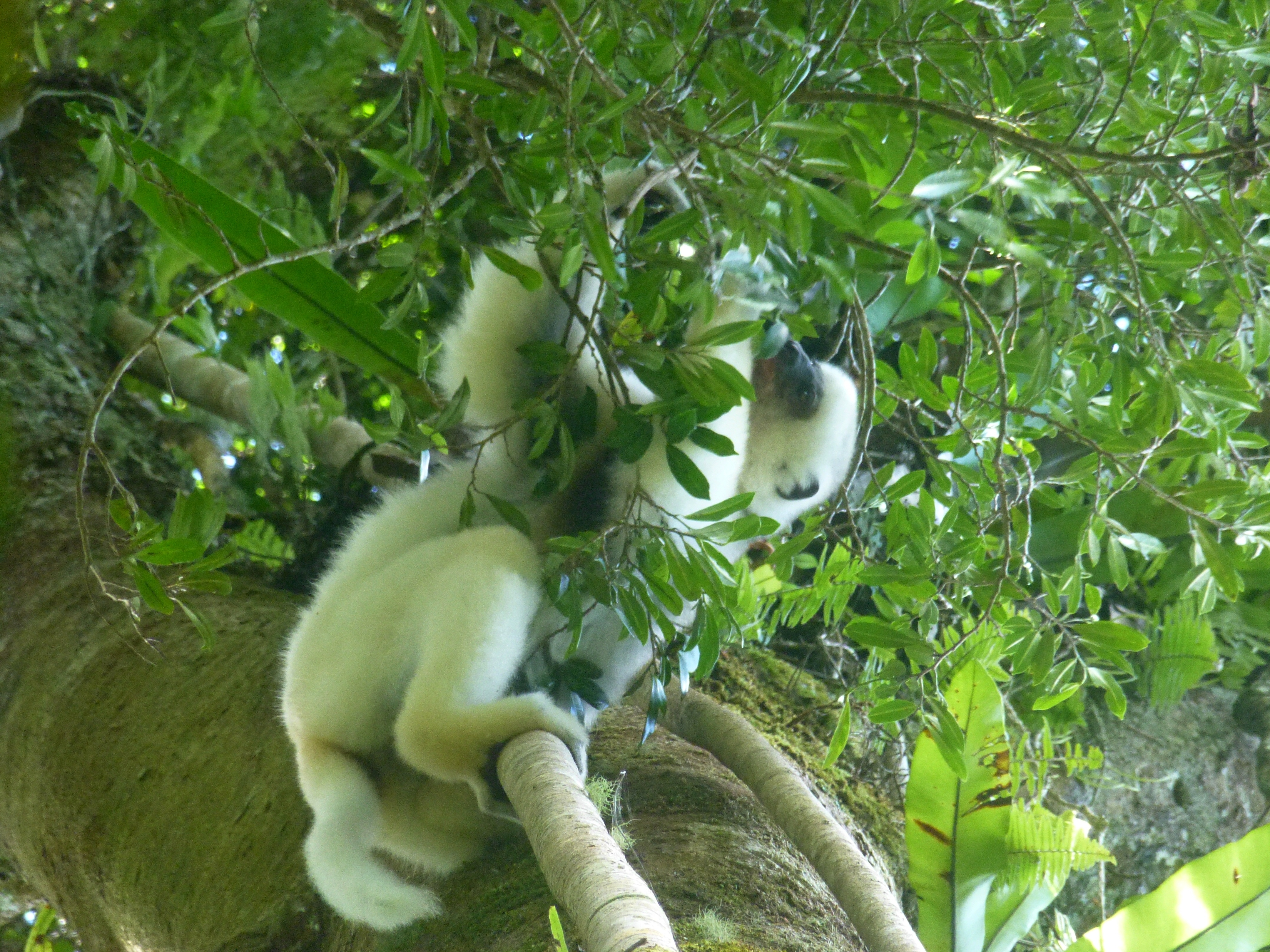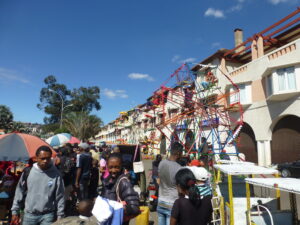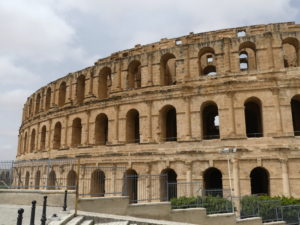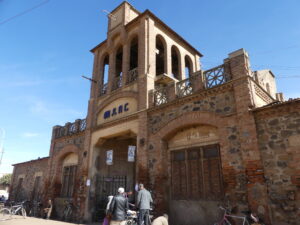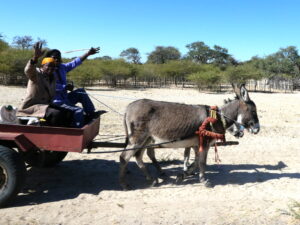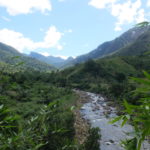
Marojejy is one of the most impressive national parks in Madagascar, with 55,000 hectares of primary rainforest, green mountains, spectacular views and twisting trails mounting over roots and rocks. It is one of six parks collectively designated UNESCO World Heritage sites because of their unique biodiversity, with over 80% of the plant and animal species unique/endemic to the area.
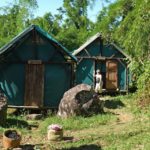
We spent three nights and days here on the principal trail through the park,the one that continues to the summit of one of its peaks, camping along the way – mostly in dry weather, though things are never completely dry in a rainforest.
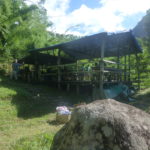
We camped at two of the three sites developed about a dozen years ago. Everything must be packed in, though fortunately porters from the local villages carry the heavy stuff and food the 4 to 8 kilometers, and the 400 to 1000 meters in altitude where the camps lie. At the sites, we stayed in cabins formed from wood structures and thick tenting. The cabins are more comfortable than tents, with bunks and foam mattresses, though they’re a bit worn down at this point, as is the open air bunkhouse at each.

There, at least, adept local cooks, like the one we had, can prepare surprisingly good meals, even for us vegetarians. The local guides and porters enjoyed heaping bowls of rice, a Madagascar staple, along with bits of popular zebu beef or that scrawny chicken one porter carried up alive.

At these sites, there is no electricity, no phone service. When it gets dark, it is black-out dark. Candles and flashlights are the only way you can find the outhouses or the bunkhouses. But the stars form an undimmed canopy of lights in the sky, when it doesn’t cloud up and rain. Two of the evenings we were in the park, it rained much of the night. The first night was clear and brilliant.
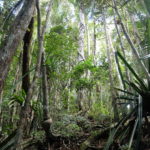
The rain, alas, summons the one inch size leeches out of the ground, not the worst we’ve experienced, but bad enough on some stretches. They don’t hurt, they don’t spread disease of any sort, but their gorging on one’s blood gets into your head. And the anti-coagulant they carry keeps the blood flowing for a while down your leg or arm. When we paused for a bit, we would check for the bloodsuckers, and dealt with plenty of stains on our clothes and pools on the ground. Luckily we were here during relatively dry days.
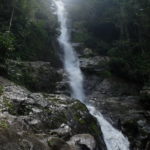
The preservation of the park dates back to 1952, a few years after a French botanist named Humbert explored and affirmed its unique qualities. The gracious and impressive cascade near one of the campsites honors his role.

Marojejy includes habitat for birds like the rare helmeted vanga, or myriad plants like the razor-leafed pandanus or eponymous marojejy palm which unfurls its broad leaves as it grows. The local villagers especially like the so-called traveler’s palm, which supplies four basic needs: drinkable water when you tap into the cluster below, food from the same section as heart of palm, shelter from rain with its broad leaves, plus housing when the leaves are used as roofing.
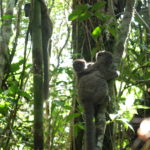
And Marojejy is also home to endemic lemurs like the bushy Bamboo lemur, the white-faced brown lemur and one of the five rarest primates in the world, the White or Silky Lemur, whose small matriarchal groups require about 4 sq. Kilometers of the forest to sustain it on the diet of leaves it needs.

We heard tales of visitors reduced to tears at seeing the Silky because of its rarity. We were fortunate to see one group of three, a pregnant female, a 4 year old child still a couple of years from finding its own group, and the father with his distinctive black chest spot (the result of rubbing out the scent of the female on trees).
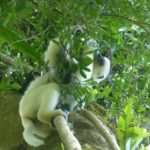
The park name means a lot of jejy, which has multiple senses: first, rock. The dominant peak here has the same name, and it is a prominent rocky crag towering over the lower primary forest, and some 2000 meters above sea level. And there are plenty of other rocks defining streams, rivers and cascades throughout the park, as well as trails.

Second, it means rain, quite appropriate to a rain forest, for it generally rains here every day, and plenty in the wet season. Down valley this water is the nurturing foundation for the extensive rice paddies along the valley floor, plus other cash crops. And, together with the perfect soil and climate, the valley becomes the ideal place to grow the best and most expensive vanilla in the world.

Third, spirits. The native religion, from its overseas source with the Malay people who first came to this island, is animist. All living things have a spirit to which people are connected. The gods are protectors or punishers of these natural beings, and demand special rituals and sacrifices. One folk custom we encountered was the taboo of passing an egg to someone; it must be put down on something, and not passed directly.
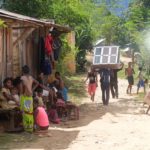
The forest is alive therefore with spirits, not the least of which for the people of the nearby villages are the resident spirits of their ancestors. For the people believe that, upon death, they live a second life, available to assist or warn their surviving family, roam the woods, or perhaps something more celestial.
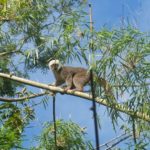
So they don’t fear death. An elderly person often chooses to die rather than suffer and burden their children. They will refuse food and drink or medicine. They accept that there will be a second life for them, wandering among the rice paddies, blessing the vanilla crops, or following perhaps the trails of the forest among the lemurs.
(Also, for more pictures from Madagascar, CLICK HERE to view the slideshow at the end of the itinerary page.)


